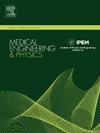A novel ECG-based approach for classifying psychiatric disorders: Leveraging wavelet scattering networks
IF 1.7
4区 医学
Q3 ENGINEERING, BIOMEDICAL
引用次数: 0
Abstract
Individuals with neuropsychiatric disorders experience both physical and mental difficulties, hindering their ability to live healthy lives and participate in daily activities. It is challenging to diagnose these disorders due to a lack of reliable diagnostic tests and the complex symptoms and treatments for various disorders. Generally, psychiatric disorders are identified manually by doctors using questionnaires, which may be prone to subjectivity and human errors. A few automated systems have recently been developed to identify these disorders using physiological signals, including electroencephalogram (EEG) and electrocardiogram (ECG) signals. Often, EEG signals are used to identify psychiatric disorders, but the EEG signals are nonlinear and non-stationary in nature and hence are relatively complex to analyze when compared to the ECG signals. The ECG signals in psychiatric patients are used due to the connection between the heart and brain. The proposed study is aimed at investigating the use of ECG signals for the automated identification of neuropsychiatric disorders, including bipolar disorder (BD), depression (DP), and schizophrenia (SZ). Generally, convolution neural networks (CNNs) have proven to be effective in accurately identifying psychological conditions. However, their application requires a large amount of data and technical expertise. The wavelet scattering network (WSN), a variant of CNNs, was introduced to overcome these limitations. The WSN is a network capable of accurately detecting unique patterns in the signal. The proposed research incorporated the WSN network and was conducted using a Psychiatric ECG Beat Dataset with a population of 233 subjects, of whom 198 were diagnosed with multiple psychiatric disorders, and 35 were control subjects. ECG signals from 3570 heartbeats were collected and analyzed using wavelet scattering-based feature extraction and machine learning techniques. The Fine K-Nearest Neighbor (FKNN) algorithm produced the best results with an average classification accuracy of 99.8% and a Kappa value of 0.996 using a ten-fold cross-validation. The model yielded an accuracy of 99.78%, 99.94%, 99.98%, and 100% for automated identification of BD, DP, SZ, and control subjects, respectively, with F1 scores and precision values close to 1. The proposed method could also help in the automated clinical detection of different psychiatric disorders.
一种基于脑电图的精神疾病分类新方法:利用小波散射网络
患有神经精神疾病的人会经历身体和精神上的困难,阻碍了他们健康生活和参与日常活动的能力。由于缺乏可靠的诊断测试以及各种疾病的复杂症状和治疗方法,诊断这些疾病具有挑战性。一般来说,精神疾病是由医生使用问卷手工识别的,这可能容易出现主观性和人为错误。最近已经开发了一些自动化系统来识别这些疾病,使用生理信号,包括脑电图(EEG)和心电图(ECG)信号。脑电图信号通常被用于精神疾病的识别,但脑电图信号具有非线性和非平稳的性质,因此与心电信号相比,分析起来相对复杂。精神病人的心电信号是由于心脏和大脑之间的联系而被使用的。这项拟议的研究旨在研究使用ECG信号自动识别神经精神疾病,包括双相情感障碍(BD)、抑郁症(DP)和精神分裂症(SZ)。一般来说,卷积神经网络(cnn)已被证明在准确识别心理状况方面是有效的。然而,它们的应用需要大量的数据和技术专长。小波散射网络(WSN)是cnn的一种变体,旨在克服这些局限性。无线传感器网络是一种能够准确检测信号中独特模式的网络。该研究纳入了WSN网络,并使用精神病学心电跳动数据集对233名受试者进行了研究,其中198名被诊断患有多种精神疾病,35名为对照受试者。采用基于小波散射的特征提取和机器学习技术对3570例心电信号进行了采集和分析。通过10倍交叉验证,Fine K-Nearest Neighbor (FKNN)算法的平均分类准确率为99.8%,Kappa值为0.996。该模型对BD、DP、SZ和对照受试者的自动识别准确率分别为99.78%、99.94%、99.98%和100%,F1得分和精度值接近1。所提出的方法也有助于不同精神疾病的自动临床检测。
本文章由计算机程序翻译,如有差异,请以英文原文为准。
求助全文
约1分钟内获得全文
求助全文
来源期刊

Medical Engineering & Physics
工程技术-工程:生物医学
CiteScore
4.30
自引率
4.50%
发文量
172
审稿时长
3.0 months
期刊介绍:
Medical Engineering & Physics provides a forum for the publication of the latest developments in biomedical engineering, and reflects the essential multidisciplinary nature of the subject. The journal publishes in-depth critical reviews, scientific papers and technical notes. Our focus encompasses the application of the basic principles of physics and engineering to the development of medical devices and technology, with the ultimate aim of producing improvements in the quality of health care.Topics covered include biomechanics, biomaterials, mechanobiology, rehabilitation engineering, biomedical signal processing and medical device development. Medical Engineering & Physics aims to keep both engineers and clinicians abreast of the latest applications of technology to health care.
 求助内容:
求助内容: 应助结果提醒方式:
应助结果提醒方式:


